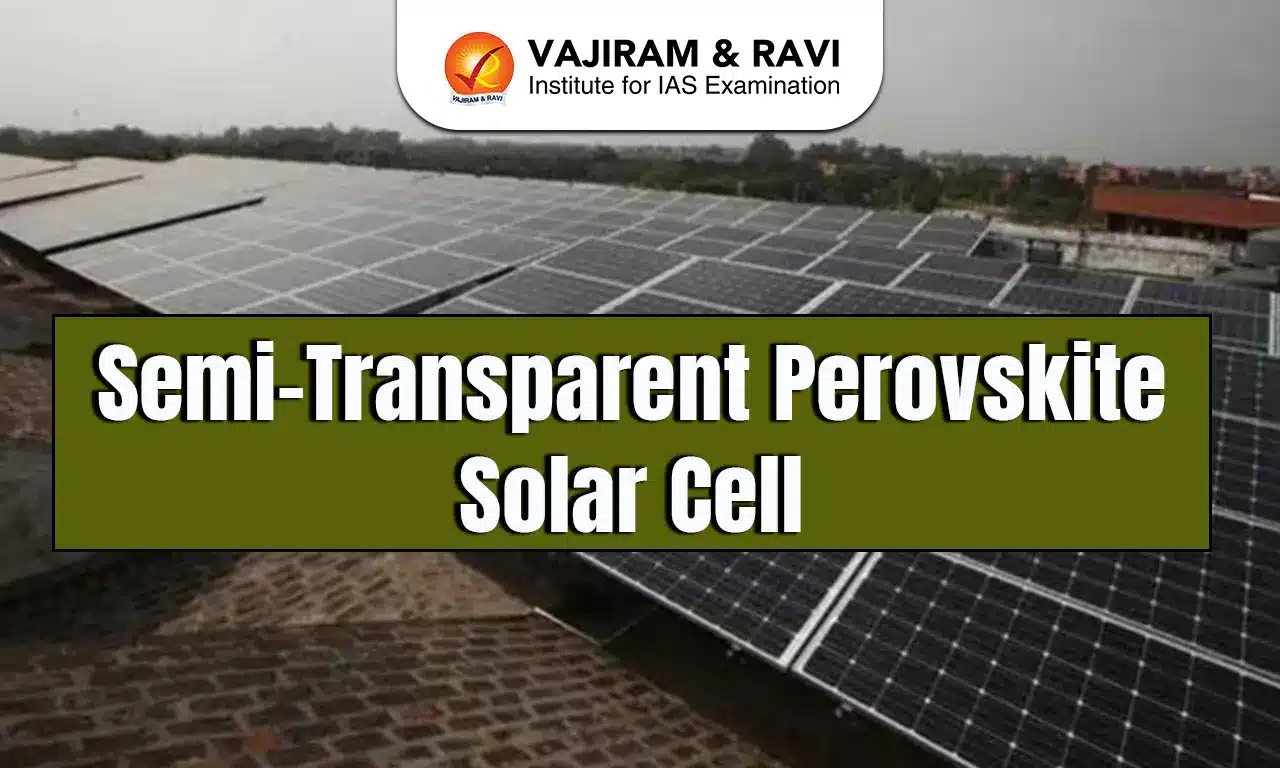Semi-Transparent Perovskite Solar Cell Latest News
Recently, the IIT Bombay researchers have developed a semi-transparent perovskite solar cell (PSC).
About Semi-Transparent Perovskite Solar Cell
- It is layered over a traditional silicon-based solar cell, forming a 4-terminal (4T) tandem structure.
- Material used: The bottom sub-cell uses well-established silicon technology, while the top sub-cell features an indigenously developed halide perovskite semiconductor, enabling high light absorption and efficient energy conversion.
- This helps in power conversion efficiency of approximately 30 per cent compared with around 20 per cent now.
- Halide perovskite is among the most efficient light-absorbing materials known today. Apart from being highly efficient in converting light into electricity, it is affordable as electronic grade perovskite semiconductors can be produced locally with available chemical resources.
- Perovskite Solar Cells are a type of photovoltaic (PV) technology that uses crystal structures called perovskites for converting sunlight into electricity.
- These crystals share the structure of the mineral calcium titanium oxide (CaTiO₃) and can be engineered to possess a wide range of optical, electrical, and semiconducting properties.
- The general chemical formula of a perovskite compound is ABX₃, where ‘A’ and ‘B’ are cations, and ‘X’ is an anion.
- They offer high power conversion efficiencies at a lower cost than traditional silicon-based PVs, but they suffer from shorter lifespan and stability issues.
Semi-Transparent Perovskite Solar Cell FAQs
Q1: What is the lifespan of a perovskite solar cell?
Ans: At least 20 years.
Q2: What is Perovskite?
Ans: Perovskite refers to materials with the crystal structure of calcium titanium oxide (CaTiO₃), discovered in 1839 in Russia. The general formula is ABX₃, where ‘A’ and ‘B’ are cations and ‘X’ is an anion.
Source: IE
Beta feature
Last updated on June, 2025
→ UPSC Notification 2025 was released on 22nd January 2025.
→ UPSC Prelims Result 2025 is out now for the CSE held on 25 May 2025.
→ UPSC Prelims Question Paper 2025 and Unofficial Prelims Answer Key 2025 are available now.
→ UPSC Calendar 2026 is released on 15th May, 2025.
→ The UPSC Vacancy 2025 were released 1129, out of which 979 were for UPSC CSE and remaining 150 are for UPSC IFoS.
→ UPSC Mains 2025 will be conducted on 22nd August 2025.
→ UPSC Prelims 2026 will be conducted on 24th May, 2026 & UPSC Mains 2026 will be conducted on 21st August 2026.
→ The UPSC Selection Process is of 3 stages-Prelims, Mains and Interview.
→ UPSC Result 2024 is released with latest UPSC Marksheet 2024. Check Now!
→ UPSC Toppers List 2024 is released now. Shakti Dubey is UPSC AIR 1 2024 Topper.
→ Also check Best IAS Coaching in Delhi
Tags: Prelims Pointers Semi-Transparent Perovskite Solar Cell upsc prelims current affairs






















